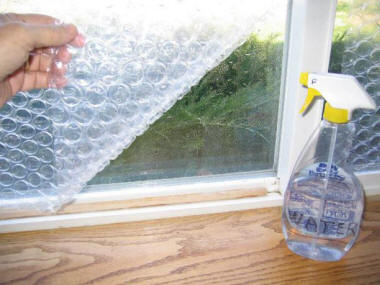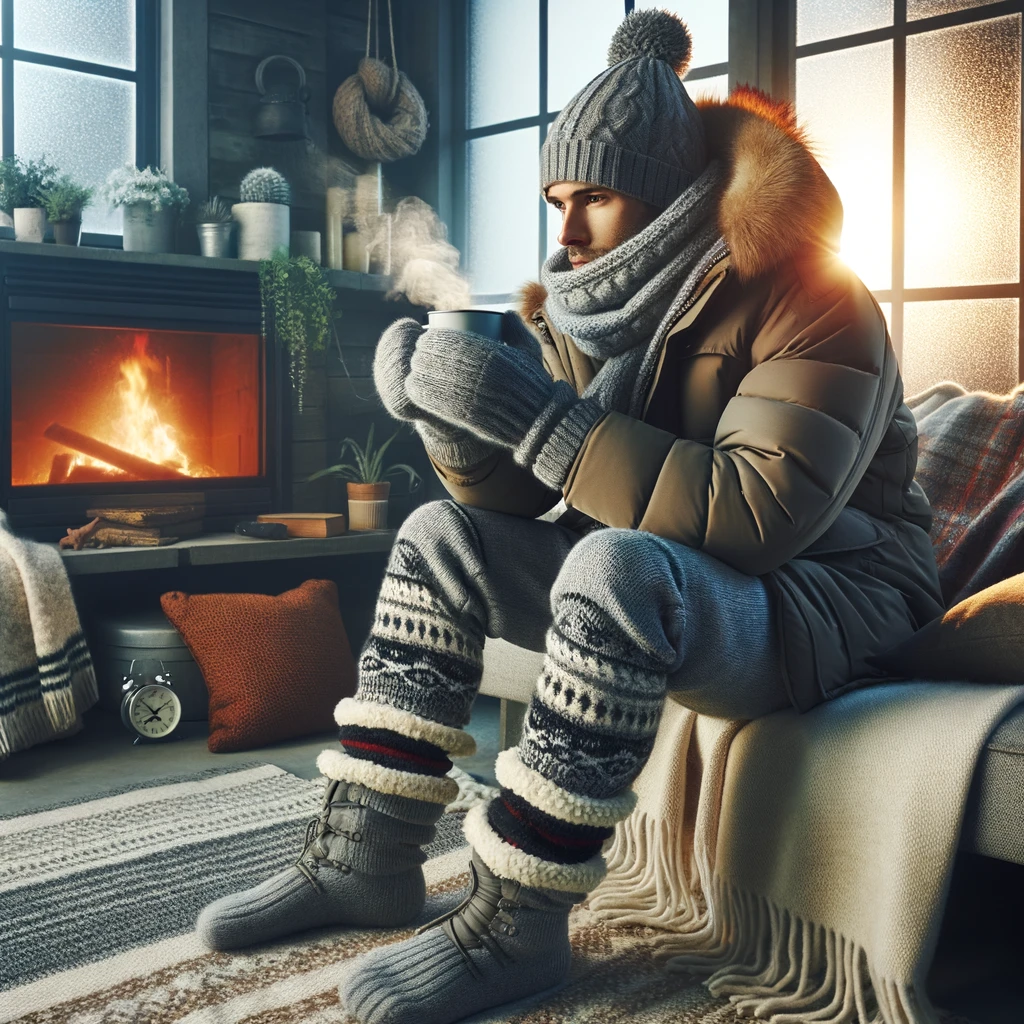Winter storms can strike with little warning, transforming your cozy hearth into a chilly and dark conundrum. When the power grid fails, are you prepared to keep warm without electricity? As temperatures plummet, your preparedness can be the thin line between discomfort and danger. It’s crucial to arm yourself with the knowledge, supplies, and skills needed to brave the cold without modern conveniences. Here are six lifesaving tips that could protect you and your loved ones during a winter blackout.
1. Insulate Your Home Immediately
As soon as you find yourself in a power outage, act swiftly to trap any existing warmth inside. Check your home for drafts and block them with rolled-up towels, tape, or even plastic sheeting. Remember the balance between insulation and ventilation to avoid condensation and stale air. Pay particular attention to:
- Doors and windows
- Kitchen and bathroom vents
- External outlets and switches
- Fireplace dampers
- Furnace and water heater vents
Use your creativity with materials like bubble wrap on windows, allowing light in while keeping the cold at bay.

2. Create and Utilize Microclimates
Microclimates are your pockets of warmth in a larger, colder space. Pitch a tent in your living room or drape blankets over furniture to form a snug retreat. Focus your living and activities in one room, preferably with a heat source like a fireplace or a sun-facing window. The goal is to reduce the volume of air you need to keep warm, thereby conserving energy and resources.

3. Layer Up: The Science of Warmth
When the power is out and every degree of warmth counts, dressing appropriately is an art form. It’s essential to understand that layering is not just piling on a bunch of clothes—it’s a strategic setup that traps air and utilizes the body’s natural heat production.
Base Layer: Your Second Skin
Start with a snug base layer that sits comfortably against your skin. Materials like polyester, silk, or merino wool are excellent because they wick moisture away. In cold conditions, staying dry is just as important as staying warm because dampness leads to rapid heat loss.
Insulating Mid-Layer: Your Personal Insulator
The middle layer is the main insulating layer. Think of it as your personal climate control—fleece, down, or synthetic loft are all excellent choices. This layer traps the heat your body produces and reduces the exchange with the colder air outside.
Outer Layer: The Final Shield
While the outer layer is often designed for protection against wind and precipitation, inside a cold house, it acts as an additional insulator and helps retain the heat you’ve built up. Materials like a thick, chunky knit sweater or a down vest can add warmth without bulk, ensuring mobility isn’t compromised.
Extremity Protection: Heat in the Details
Your extremities—ears, fingers, toes—are the first to feel the chill, as the body prioritizes keeping your core warm. Woolen socks, insulated boots, a warm hat, and mittens (which are warmer than gloves) will prevent heat from escaping and keep your blood circulating properly.

4. Internal Furnace: Stoking the Fire Within
Staying well-nourished and hydrated is a critical aspect of keeping warm. The process of metabolizing food helps to raise your internal body temperature, acting like an internal heater.
Hydration: Liquid Warmth
Hydration aids in temperature regulation. Warm beverages like herbal tea, broth, or simply hot water with lemon not only provide a comforting warmth as you hold and sip them but also raise your core temperature as your body absorbs the heat.
Calorie-Rich Foods: Fuel for Heat
High-calorie foods are essential during a power outage in winter. Your body burns more calories to stay warm, so foods high in healthy fats and proteins can be particularly beneficial. Nut butters, trail mixes, and canned stews can offer sustenance and much-needed energy reserves for heat production.
Safe Cooking Methods
Consider safe ways to heat food without electricity: a wood stove, a gas grill outside, or even a camping stove (used with caution and proper ventilation). Never use outdoor grills or camp stoves indoors, as they can cause carbon monoxide poisoning. If you have a fireplace, it can serve as both a heat source and a means to warm up food items.
Warm Packs and DIY Tricks
No microwave? No problem. Heat packs can be made by filling a sock with dry rice or beans and warming it over a stove or in a sunny window spot. Once heated, these packs can be a great source of warmth, keeping your bed or sitting area comfortable.
5. Keep Moving and Stay Social
Light exercise and social interaction can significantly elevate your body temperature. Play games, engage in group activities, and keep the atmosphere lively. Not only does movement generate warmth, but a cheerful environment can combat the emotional strain of a power outage.
6. Investigate Alternative Heat Sources
Explore safe and effective methods to stay warm. This can include:
- Visiting a friend with a heat source
- Snuggling with pets or loved ones
- Using thermal mass like hot water bottles or heated bricks
- Employing disposable or battery-powered hand, foot, and body warmers
Always prioritize safety and be aware of the risks of carbon monoxide poisoning with certain heat sources. If you choose to use a portable heater, ensure it’s rated for indoor use and you have functioning carbon monoxide detectors.
Key Takeaways for Winter Readiness
In the throes of winter, preparation is key. Here are some additional pointers:
- Stock Up: Have an ample supply of warm clothing, blankets, and food.
- Heating Alternatives: Keep safe backup heating options and fuel.
- Insulation Materials: Maintain a store of plastic sheeting, tape, and other insulating materials.
- Lighting and Power: Invest in emergency backup lighting and a power source for critical needs.
Equipped with these six strategies, you can transform a winter power outage from a dire emergency into a manageable, even adventurous experience. Share this knowledge with your family and community to ensure everyone can stay warm and safe when the grid goes down in the cold.
Stay prepared, stay warm, and remember, a little preparation goes a long way in the heart of winter.

test